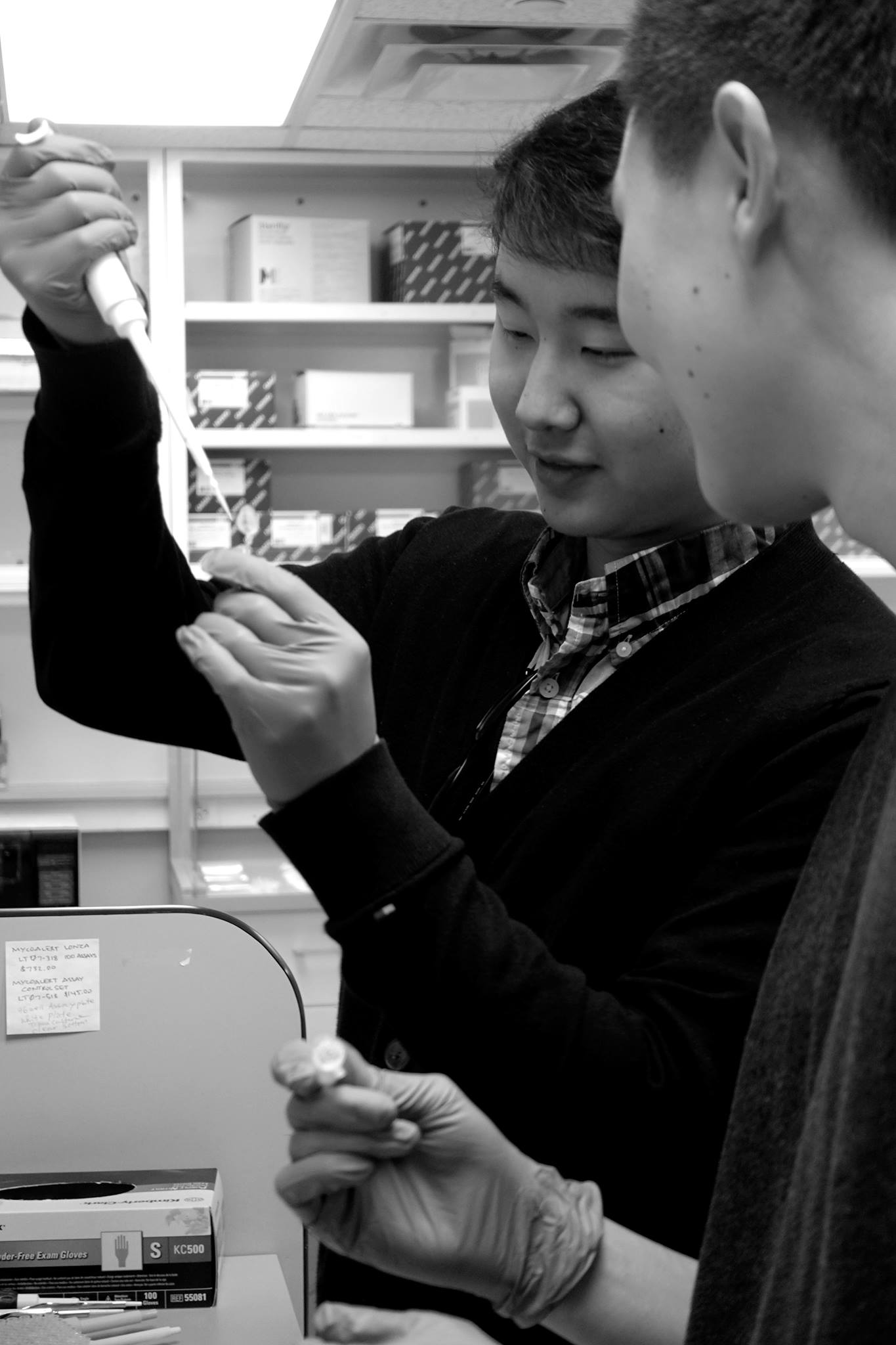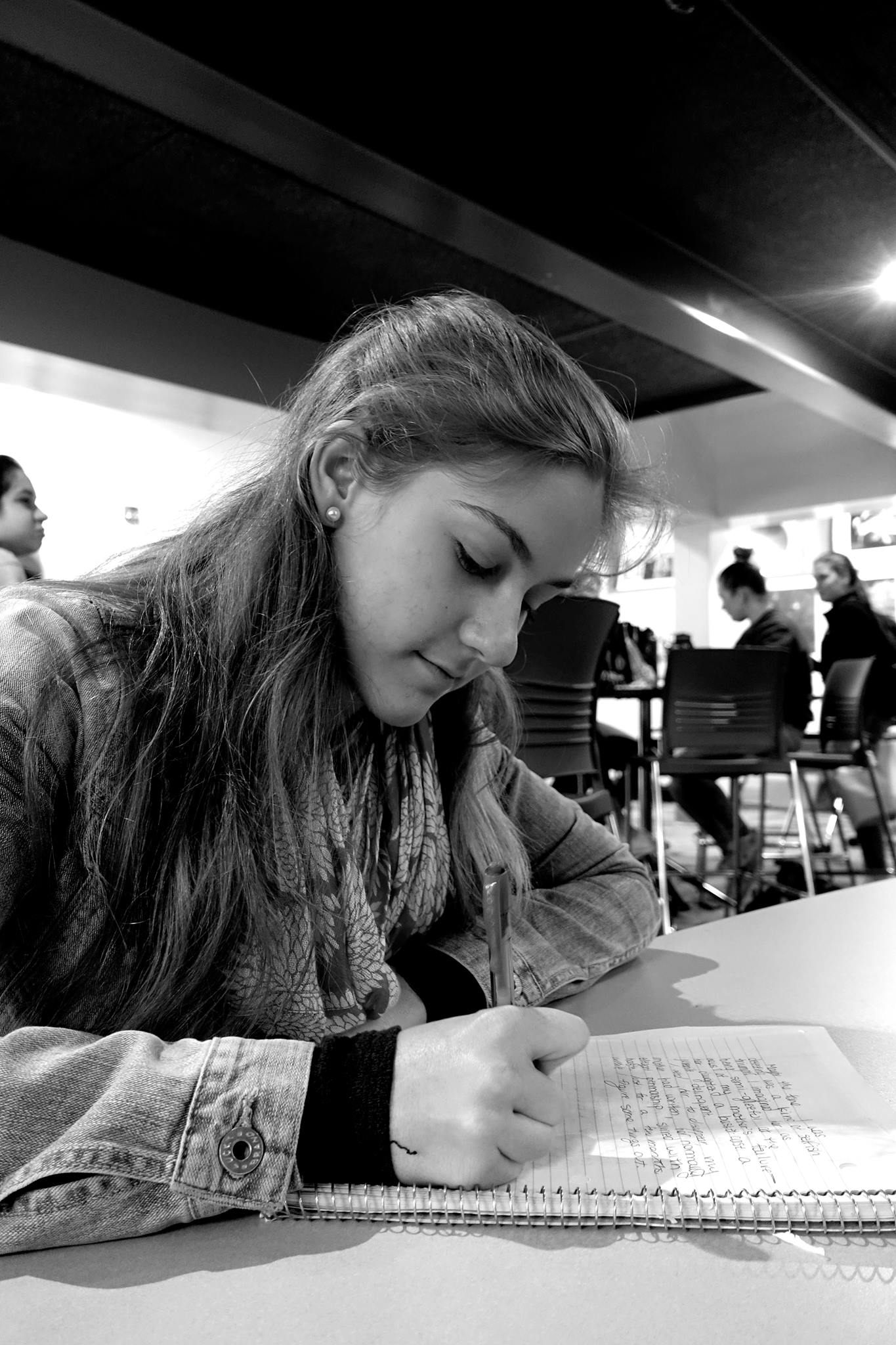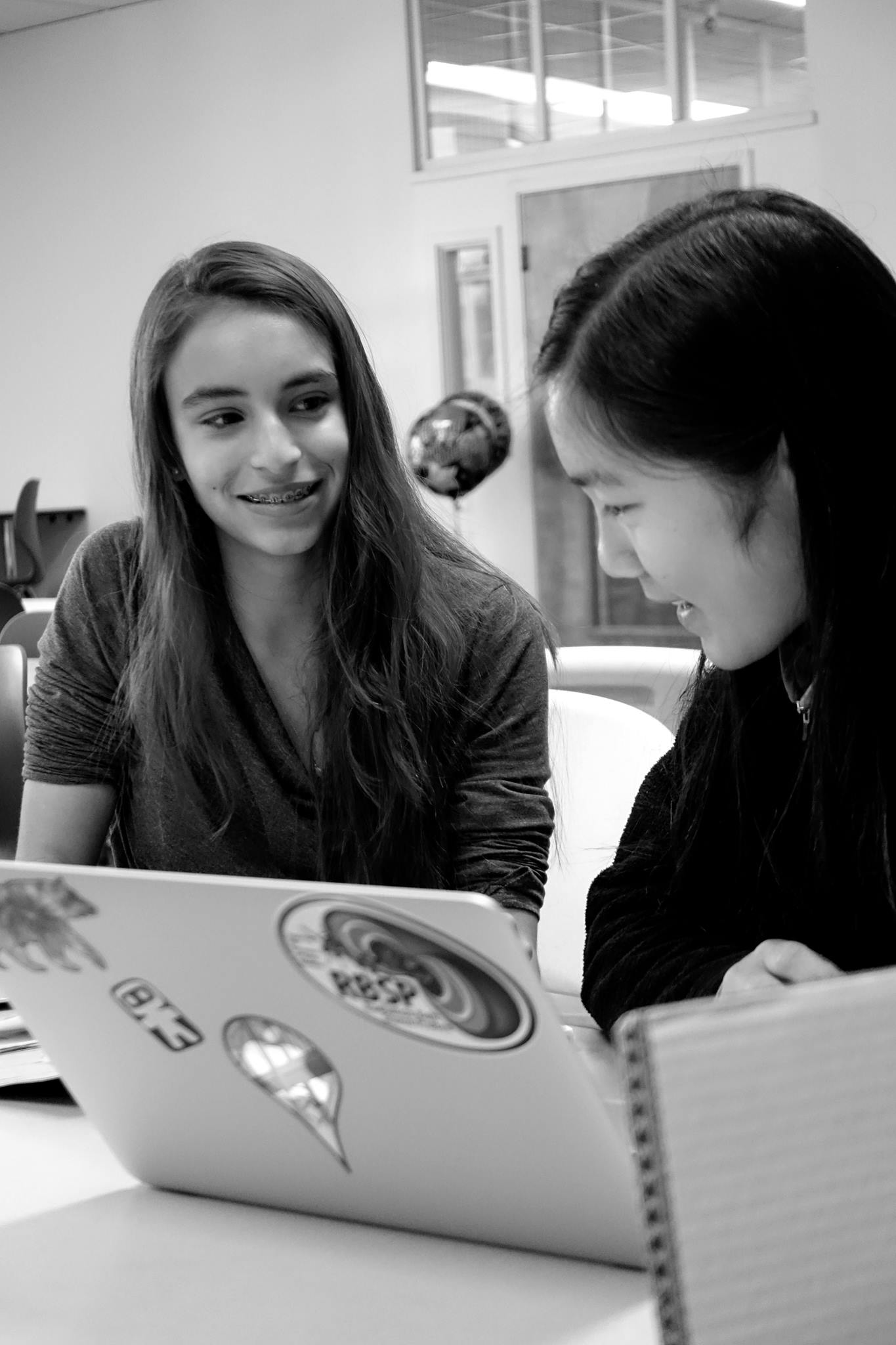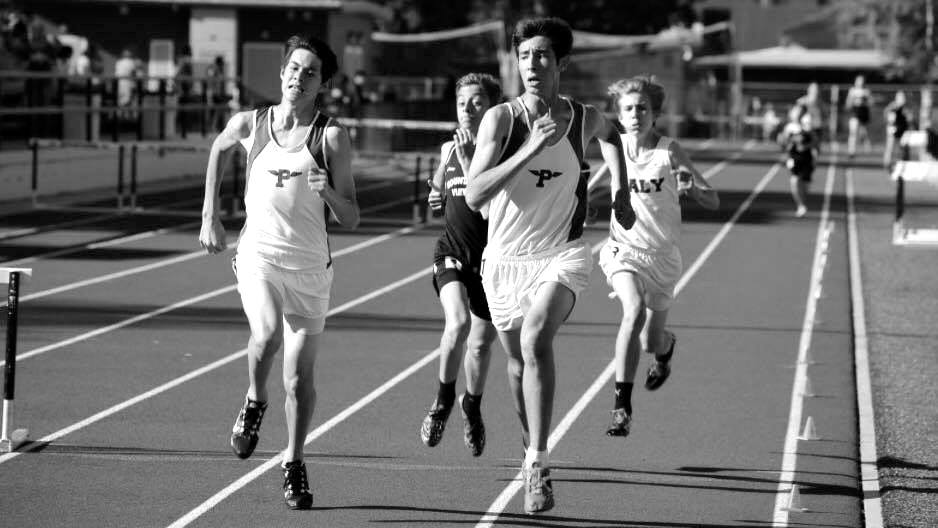A voice announces the beginning and end of each race over a loud speaker. People run around, drinking water, yelling and stretching — getting ready for their next competition. It’s a hot afternoon at the Stanford Invitational Track meet, and everyone is slowly baking in the sun. Amid all the chaos are Palo Alto High Schol sophomores Elliot Clark, Niklas Risano and Noah Yuen. Besides volunteering in the meet, the three are also using a smart bracelet to measure the water content left in their bodies after a run. After jotting down the numbers on a clipboard, they take turns lining up at the start to run again and collect more data.
Risano, Yuen and Clark are only three of the 40 students at Palo Alto High School participating in the district-wide Advanced Authentic Research Program, an eighth period class that provides students with an opportunity to expand their knowledge in an area of their choosing. They are researching how sports technology advancements impact runners with help from their mentor, Adam Jung, an engineer for General Electric in Michigan.
The class meets during Tutorial with Paly math teacher Deanna Chute. Unlike the Science Research Project class, AAR is open to all research areas, not just those relating to science, technology, engineering or math.
“This is a platform for anyone to explore anything,” Chute says. “This is not for certain kids [or] certain fields.”
This school year was AAR’s pilot year. According to Chute, the district felt unsure about how many students were going to sign up, so an application process was put in place to narrow the numbers down to a manageable size. Chute is working with Dr. Jeong Choe, the district’s AAR coordinator, to make the course more structured and offer more support for the students next year.
Prospective students must submit a letter of intent to show the teachers what they plan to do with their project. According to Choe, because of the increase of applicants from both Gunn High School and Paly, the class will expand from about 75 students this year to approximately 200 students next year.
This program provides students with mentors at the beginning of the year to support students when needed. After students connect with their mentors, they work on a proposal, execute their project and then prepare for an exhibit and celebration at the end of the year.
“It’s more independent than most school programs, so you learn things that are going to help you in the real world such as being able to do research on your own,” Risano says. “Even though we do have mentors it’s been [a lot of] self-guided learning.”
Read on for three examples of student research projects.

Osteoporosis: of mice and men
Seniors Eric Chiang and Kevin Li are testing specific genes that are linked to Osteoporosis, a bone disease that causes frail bones and increases risk of fractures, to see if they are expressed in mice.
The two spend much of their time in a lab with their mentor, Joy Wu, a PhD and medical doctor in the Grant Building at Stanford.
When they started their project, they viewed it as an opportunity to gain research experience. Li already had an interest in medicine, and he thought participating in AAR would help narrow his focus. Chiang and Li’s inexperience in the field caused some problems in the beginning. However, they got the hang of it and after some stumbles along the way balanced by periods of hard work, they find the experience has been rewarding.
“I feel like AAR gave me lots of research experience early whereas most people have their first research experience in college,” Li says. “I have a better idea of what it is going to be like and what I’m going to do in the future.”

“RS802”: The next Bestseller
Senior Caroline Bailey is writing a novel titled “RS802”.
“It’s a science fiction young adult novel,” Bailey says. “The characters sort of squat on [a piece of] land that’s been designated [as] a planet wide trash dump, and they live off scavenging this planet and reselling goods there.”
Bailey grew up loving creative writing and always found herself imagining new stories. She came to love the art and began to write more and more frequently.
“I love creating and developing characters and … world-building,” Bailey says. “I love writing science fiction because it’s a very free genre — it doesn’t restrict you in time and place, it allows you to make up your own rules. Science fiction gives one person the power to define a future.”
Bailey submitted an AAR proposal because the program allowed her to channel her passions of creavite writing and science fiction into a final product.
“My experience with AAR has probably been very different from a lot of people since the majority of projects are math and science focused,” Bailey says. “It’s been a really great experience to work on something that like I’m really passionate about.”

Narcissism: Man in the Mirror
Sophomores Leila Tjiang and Maya Homan’s psychology project focuses on narcissistic personality disorders and how antisocial and borderline disorders relate to it.
“[We] chose Narcissistic Personality Disorder because some members of my family suffer from it, and studying it would give me a chance to understand better,” Homan says.
Though they have found themselves pressed for time, Homan and Tjiang are motivated to complete their project and devote energy to it.
“It’s … really rewarding, because we get a chance to potentially make a difference in the world with the work we do,” Homan says.
Throughout the process of their project, Homan and Tjiang have learned to be independent researchers.
“You have to have motivation to do a lot of work on your own. You conduct real research [and] use databases rather than getting data from your teacher,” Tjiang says.





